Tate vs. Tate – Paula Rego // The Making of Rodin
A review of two art exhibitions finishing soon in London: Paula Rego at Tate Britain, and The EY Exhibition: The Making of Rodin at Tate Modern. Two monographic exhibitions but with different approaches, each of them illuminating the artistic practice of their subjects.

Tate vs. Tate
Ok, not really Tate vs. Tate. But a comparison of two of their current exhibitions, both of which are closing within the next few weeks. And an interesting commentary on their programming choices. At Tate Modern we have an exhibition of plaster works by Auguste Rodin, showing how he worked on and developed ideas. And at Tate Britain, we have a survey of work by Portuguese-British artist Paula Rego, from the 1960s to recent work. So a contemporary artist at Tate Britain, and a reasonably historic (classically modern?) artist at Tate Modern. Clearly, an aim to subvert expectations and possibly cross-pollinate different art audiences.
Both of these exhibitions are fairly straightforward in their presentation. One is chronological, and the other thematic. They have a good selection of works, and you can learn a lot about the respective artists. Both also present the artists in context – art historical and the wider social/political context as well.
As a quick sidenote, I ended up visiting both of these exhibitions on more or less the last timeslot of the day. I would highly recommend this. I didn’t have time to linger over each and every thing on display. But it was a lot less busy and stressful than some of the other things I’ve been to at the Tate during the pandemic (like Warhol or Aubrey Beardsley). Also: kids are great and everything, but I like a child-free exhibition now and then, which the late timeslot helps with. Something to consider.

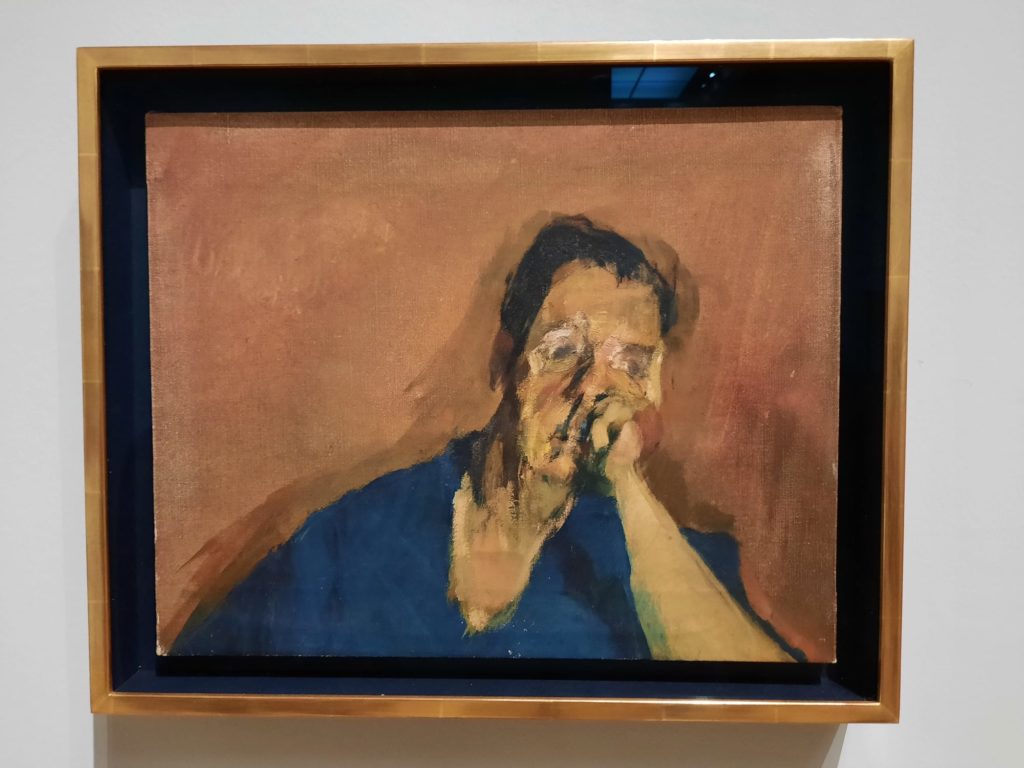
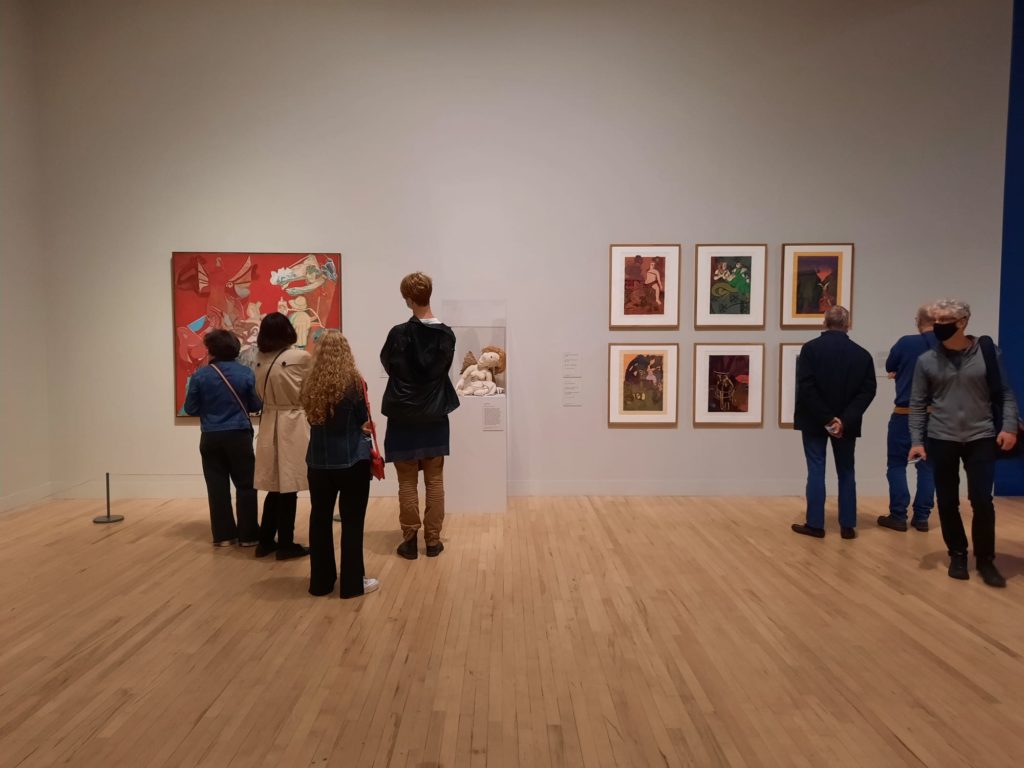
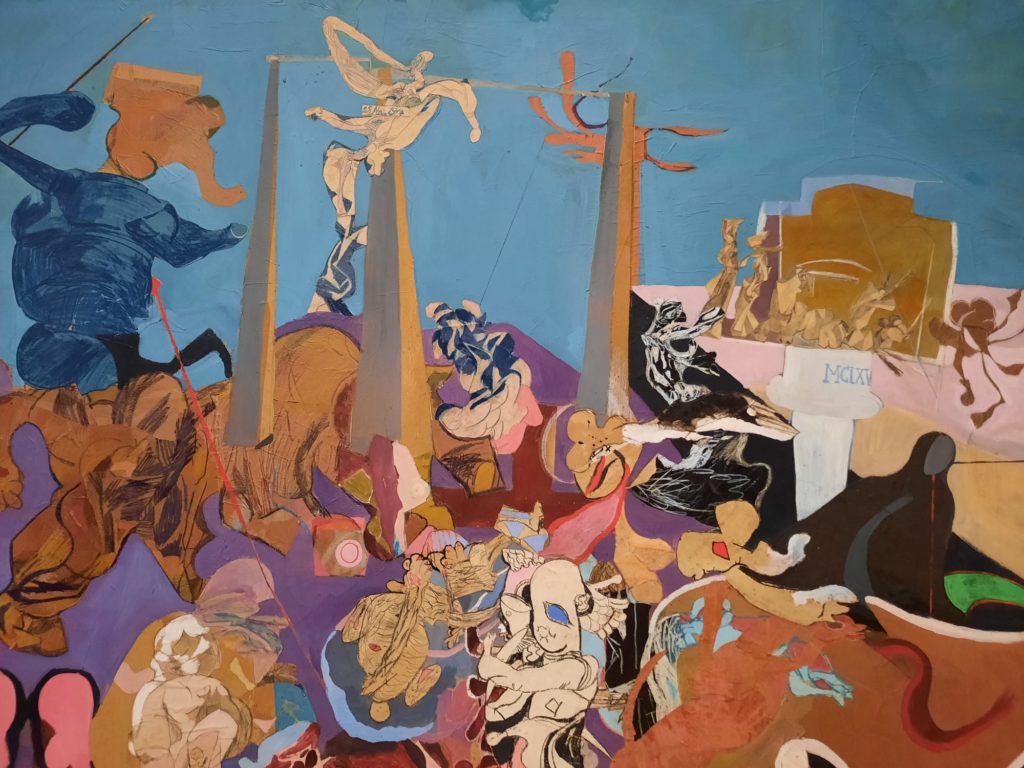
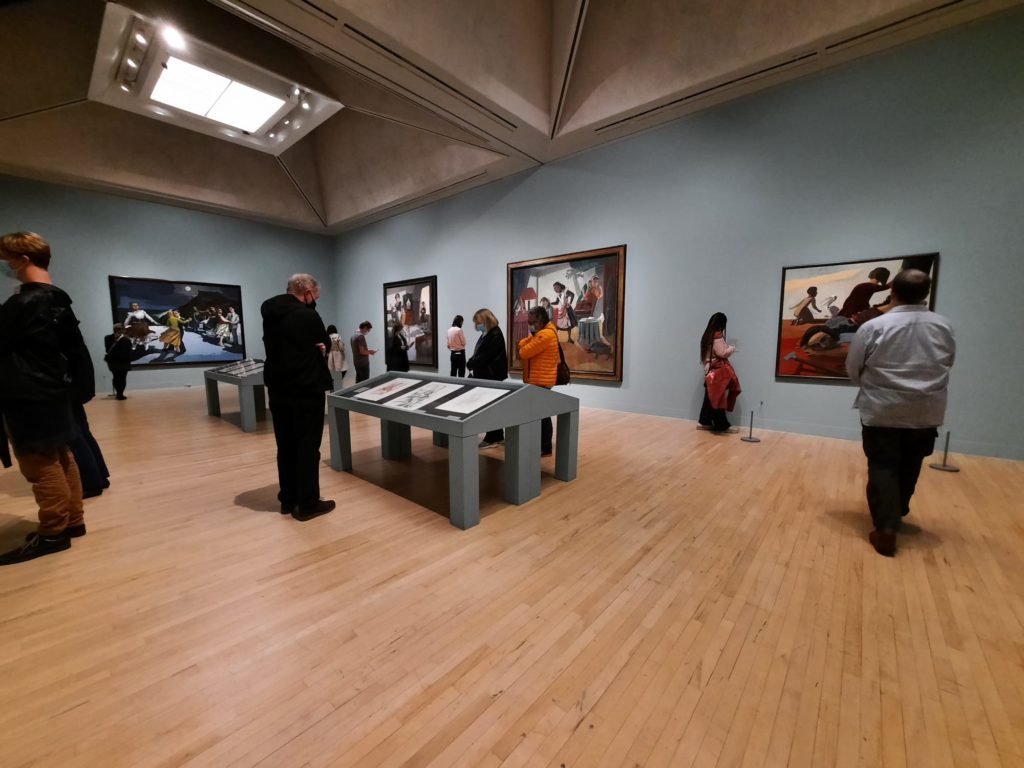
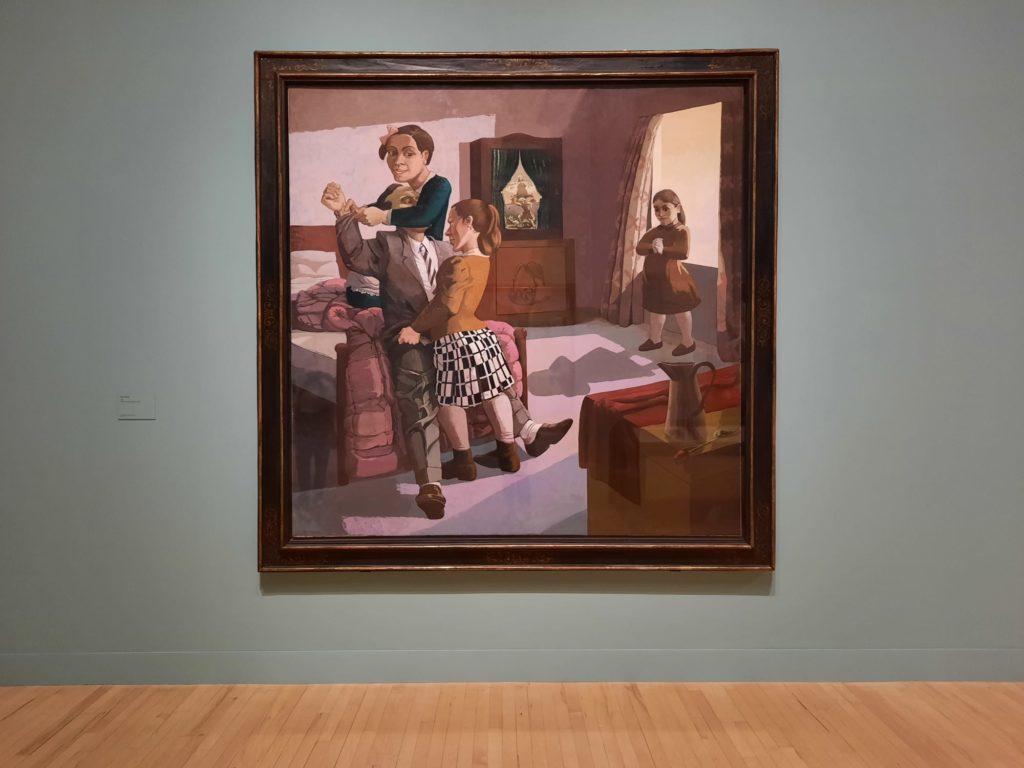
Paula Rego
Paula Rego was born in Lisbon in 1935. Her connection to Britain is a long one: her anti-fascist parents sent her to a finishing school in Kent at the age of 16. From there she went to the Slade School of Fine Art, where she met and later married fellow student Victor Willing. Rego has spent time between Portugal and England over the years, but settled in London in 1972.
The experience of growing up under a dictatorship has left an indelible mark on Rego’s artistic practice. Her work is politically engaged, and includes paintings and series on abortion, violence against women and colonial brutality. She has often explored the impact on women of growing up in patriarchal societies. Since the 1980s, many of her paintings have featured strong, rebellious girls as their central subjects. This introspective and somewhat autobiographical thread runs through Rego’s art in other ways. She explores complex emotions, for example processing her husband’s illness and death through her work. This psychological element gives the exhibition a depth and complexity which is fascinating.
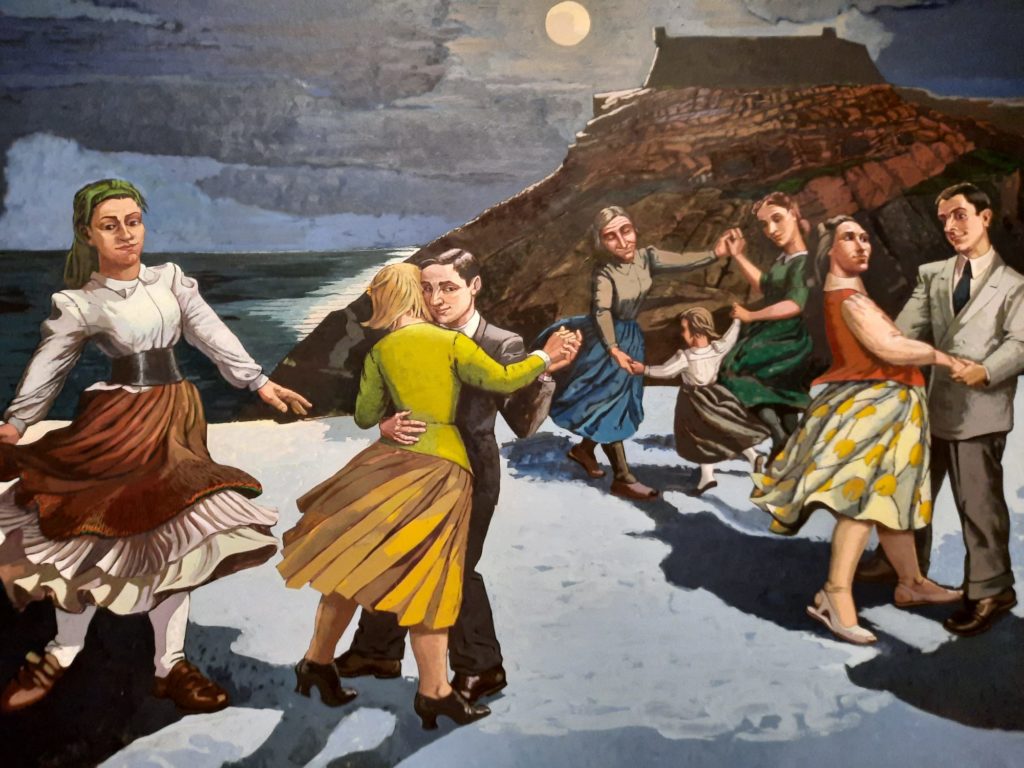
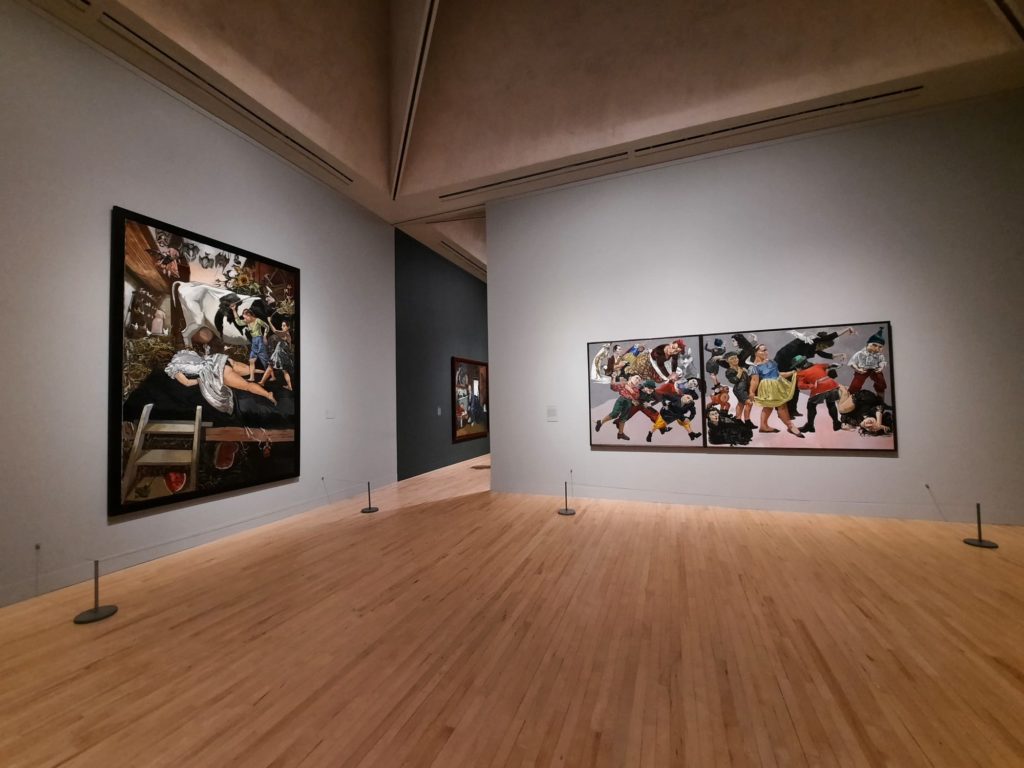
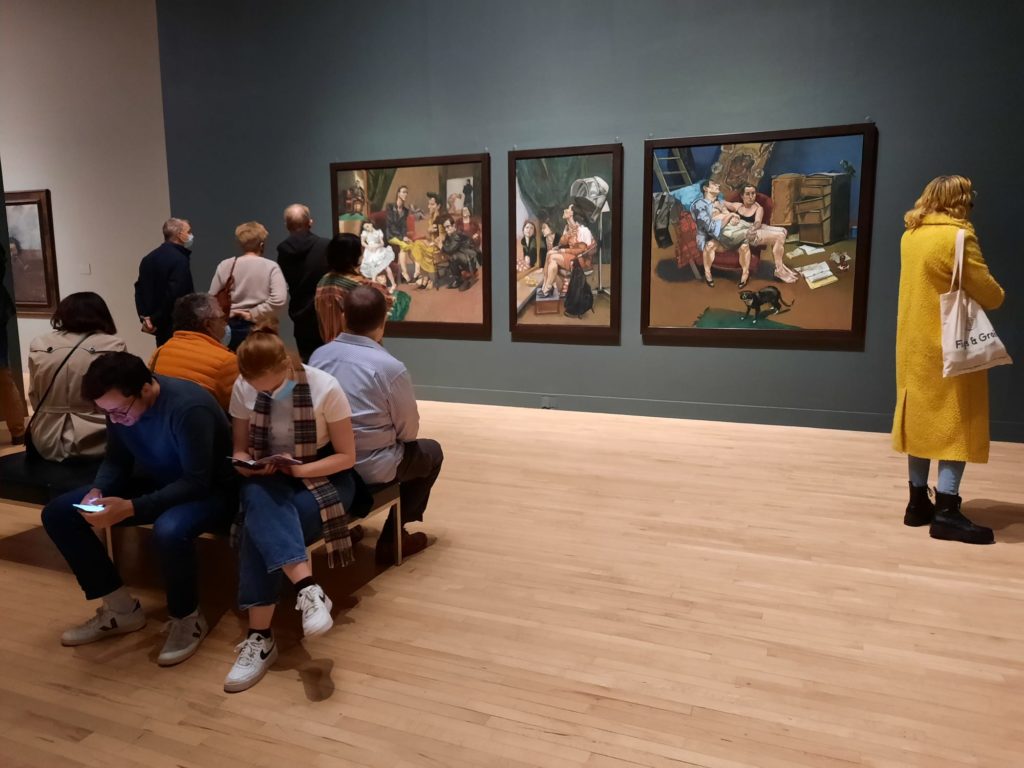
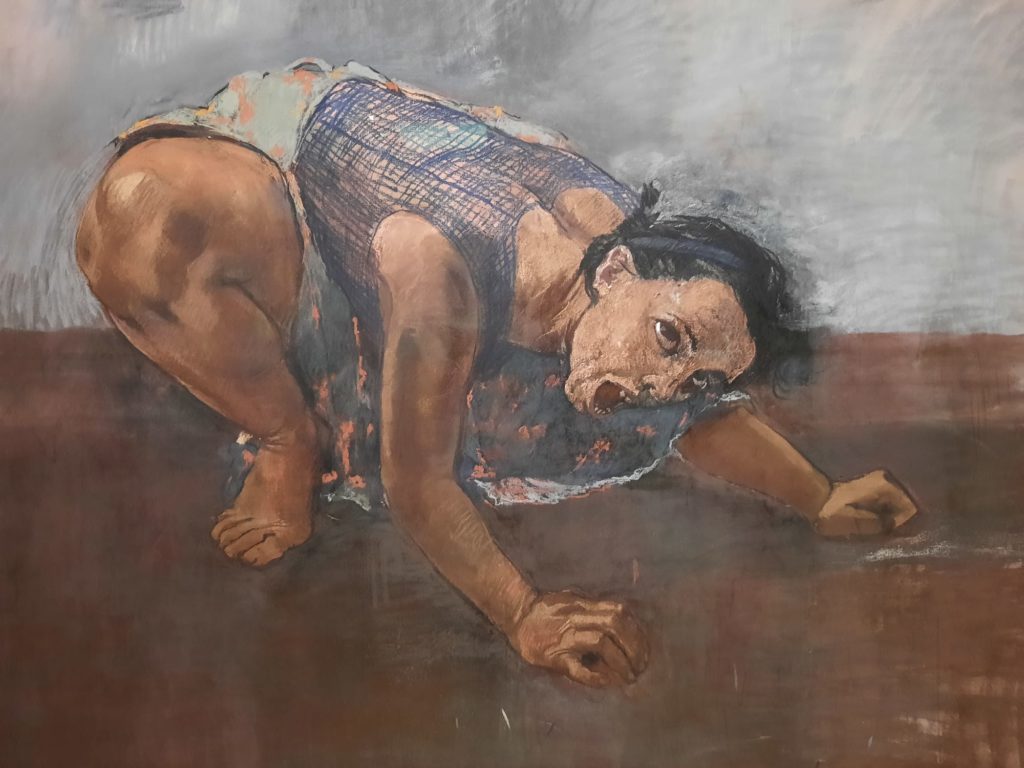
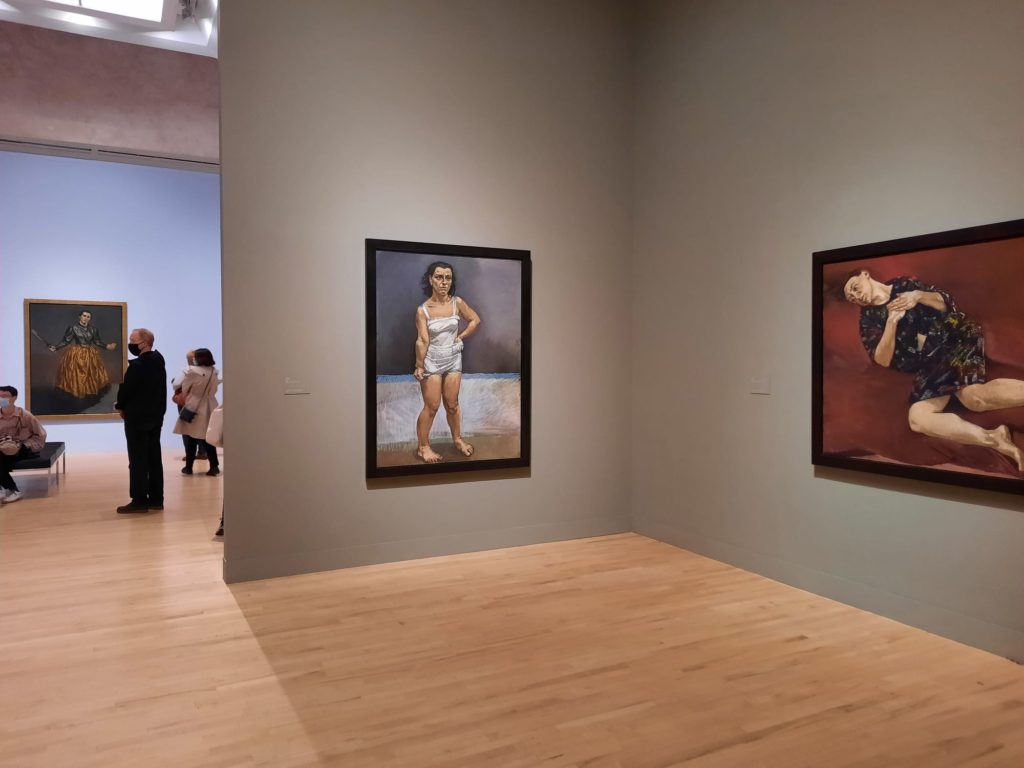
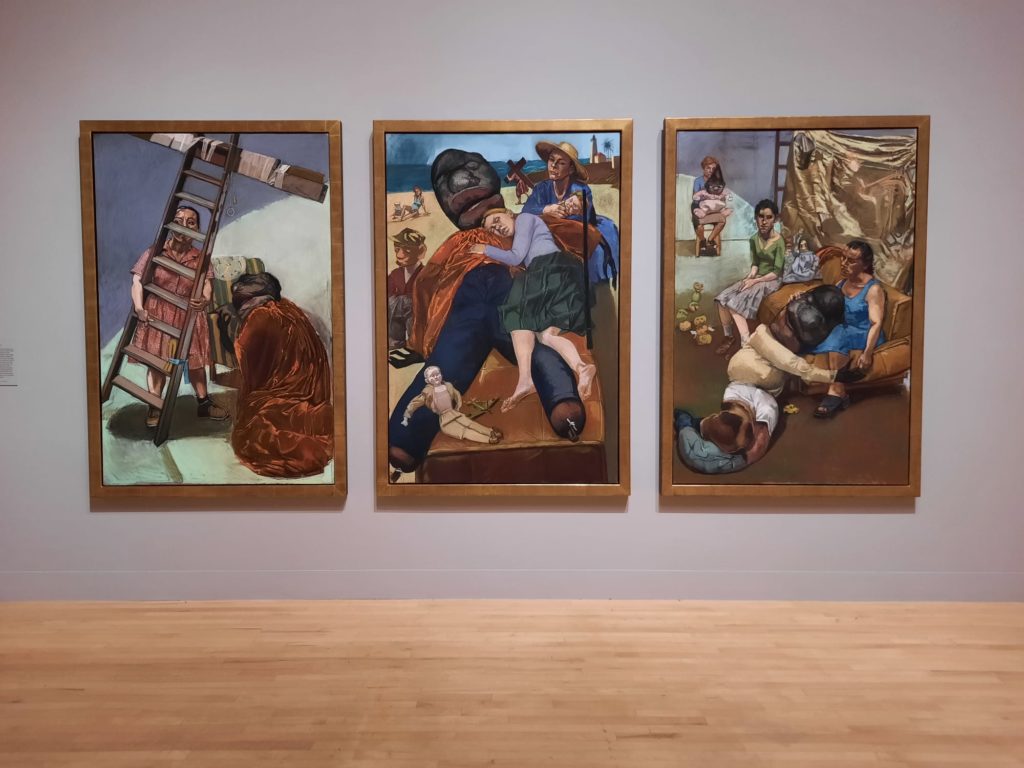
The Evolution of a Style
What I really enjoyed about this exhibition and its chronological structure is the insight it gives into Rego’s evolving style. I wasn’t much taken by her early collages, although her talent from an early age certainly shone through. We then see Rego move into bold figurative painting, with strong outlines and imaginative characters. Over the years the boldness and the imagination remain, but her style matures before our eyes. The scenes become more complex and multi-faceted, the style more refined and able to convey psychological states more readily.
This was particularly evident to me in the room dedicated to her time as the first Artist in Residence at London’s National Gallery. A number of complex and layered works draw on yet subvert artists like Velázquez and Hogarth. Often this subversion takes the form of inserting and interrogating female characters. What I admire about Rego is that she is able to demonstrate that a female artist can depict female subjects and concerns without somehow being ‘less than’ a comparable male artist. This shines through so much of her work, and is especially evident when you see various series together.
So do go and see Paula Rego if you have the opportunity. The exhibition is a nice size, and the works look great against the bold wall colours. Rego’s art can be challenging, but it is a challenge I enjoyed and would recommend.
Salterton Arts Review’s rating: 3.5/5
Paula Rego on until 24 October 2021
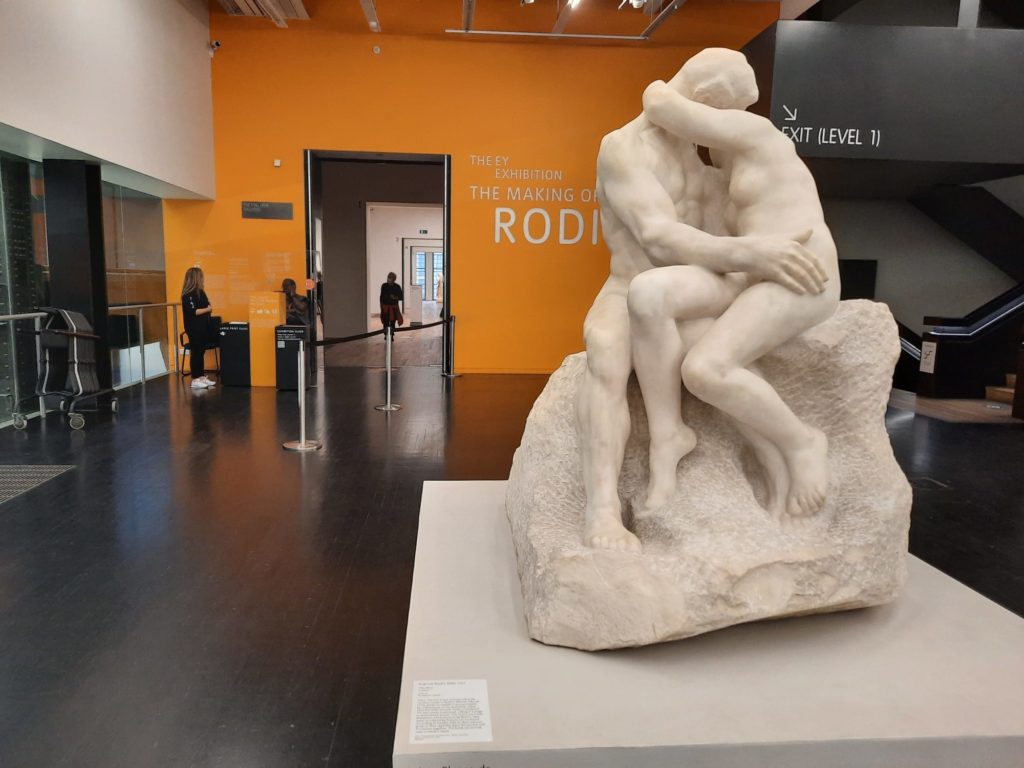
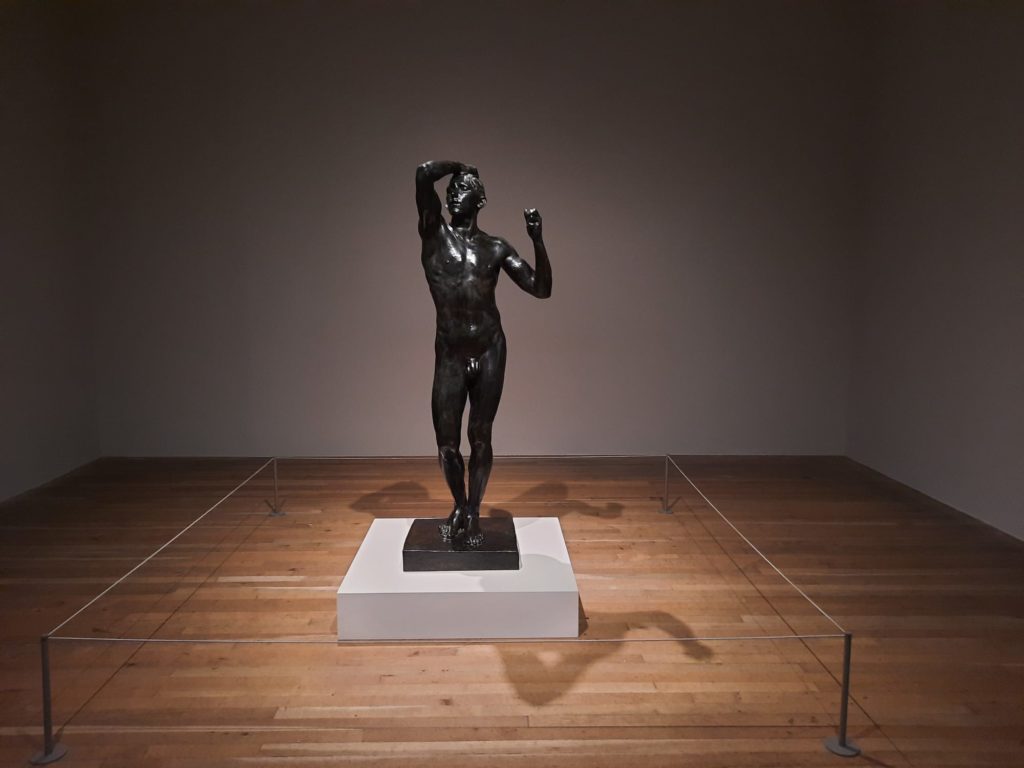
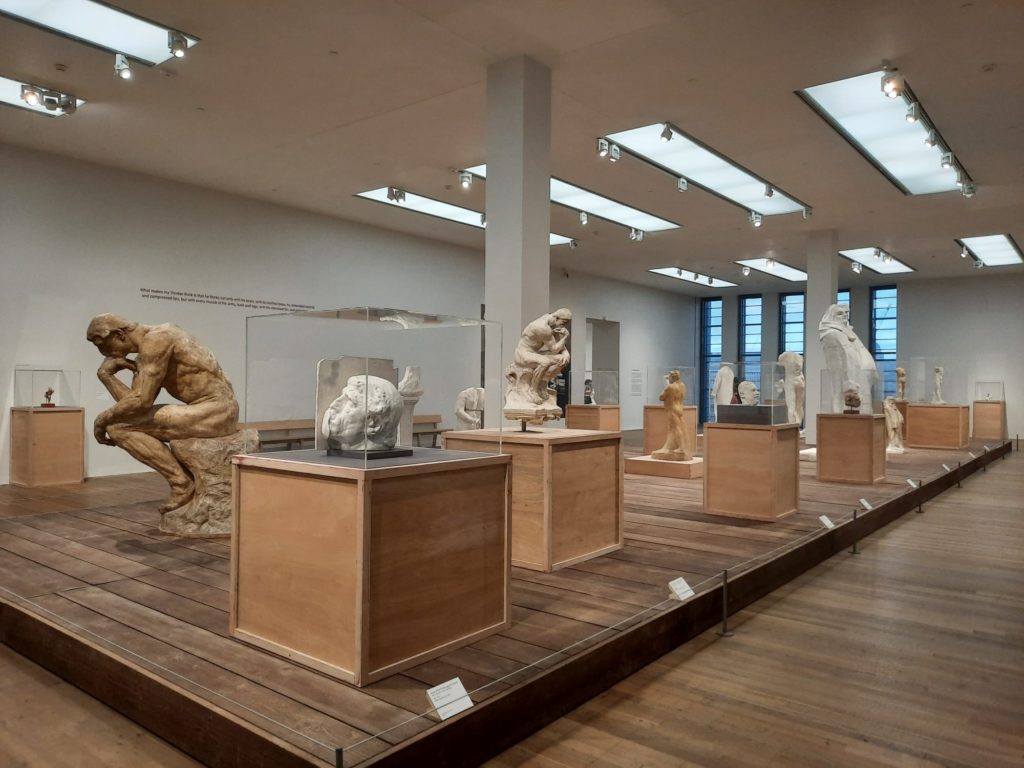
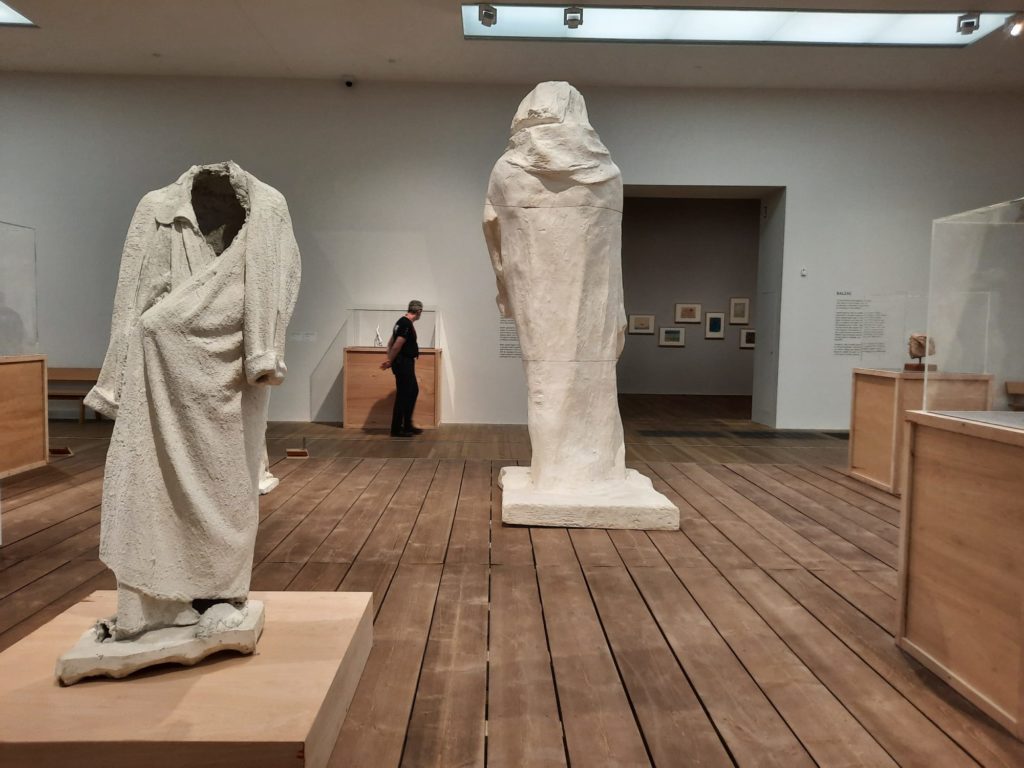
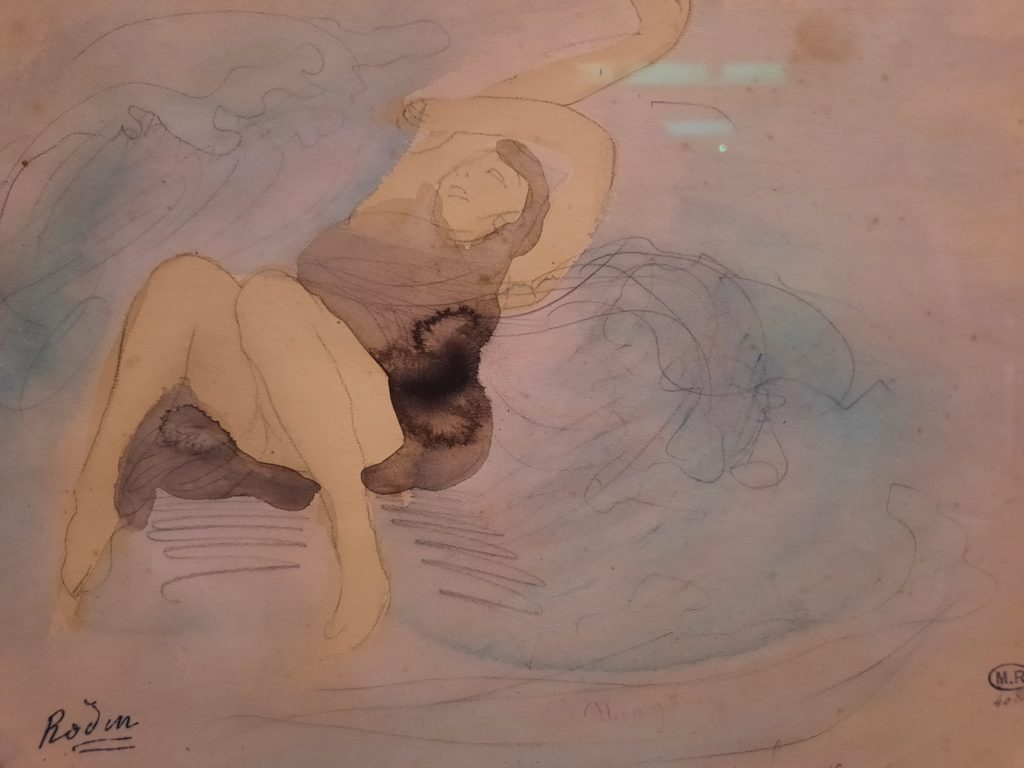
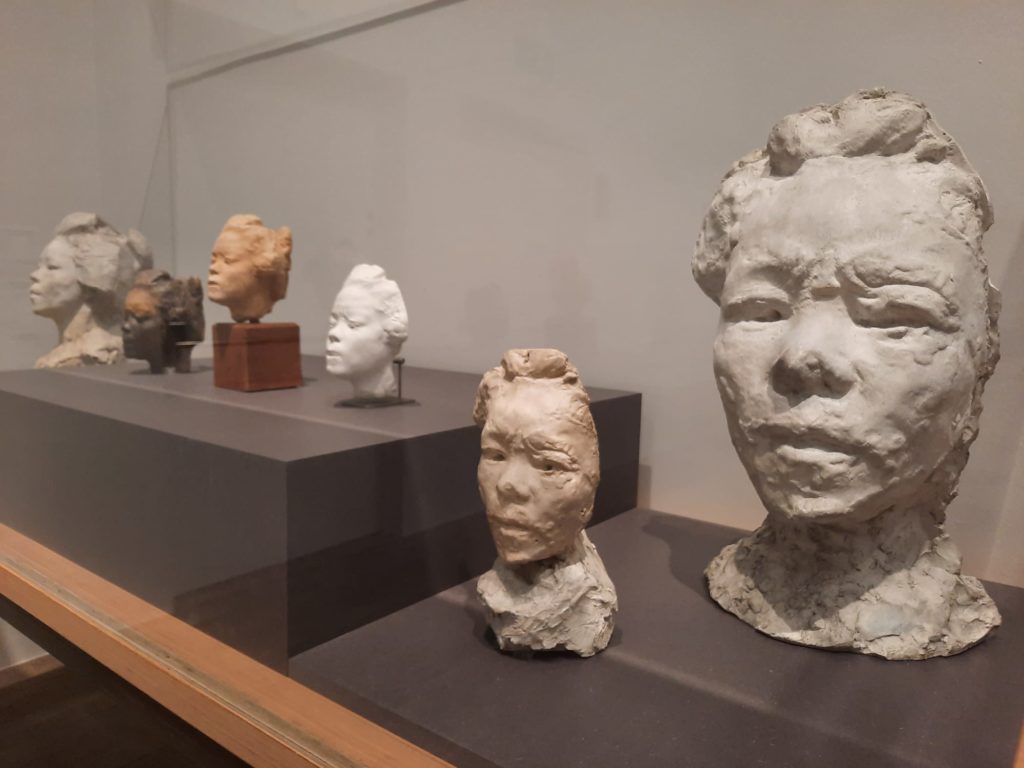
The Making Of Rodin
The Making of Rodin is rather a different exhibition to Paula Rego. They are both monographic of course, but Rego is less of a household name than Rodin. Rodin also has a century on Rego, and several works which have permeated popular culture (think The Kiss or The Thinker). The Making of Rodin, as the name suggests, also has more of an ‘angle’ than Paula Rego, which is a fairly straightforward retrospective. The exhibition is about how Rodin created, and how this set him apart.
François Auguste René Rodin was born in France in 1840. His art education was traditional, but he is known for breaking with convention. His sculptures were more naturalistic than his contemporaries. He sought to bring the viewer into the work, for example by displaying The Burghers of Calais at ground level. His monument to Balzac was shocking enough that his commission to produce it was cancelled. Because his works are figurative and naturalistic I think it’s easy to forget just how far Rodin shifted the boundaries of modern sculpture.
This exhibition draws heavily on the collection of the Musée Rodin in Paris, and is almost entirely made up of plaster casts. Rodin worked extensively in plaster. As a medium, it falls somewhere between clay/wax and metal/stone in terms of malleability and permanence. Looking at Rodin’s works in plaster also creates a dialogue with his important exhibition of 1900. Rodin chose to display several works in plaster that had never been cast in bronze. This was both an insight into his working methods and an elevation of what is typically seen as a work in progress.
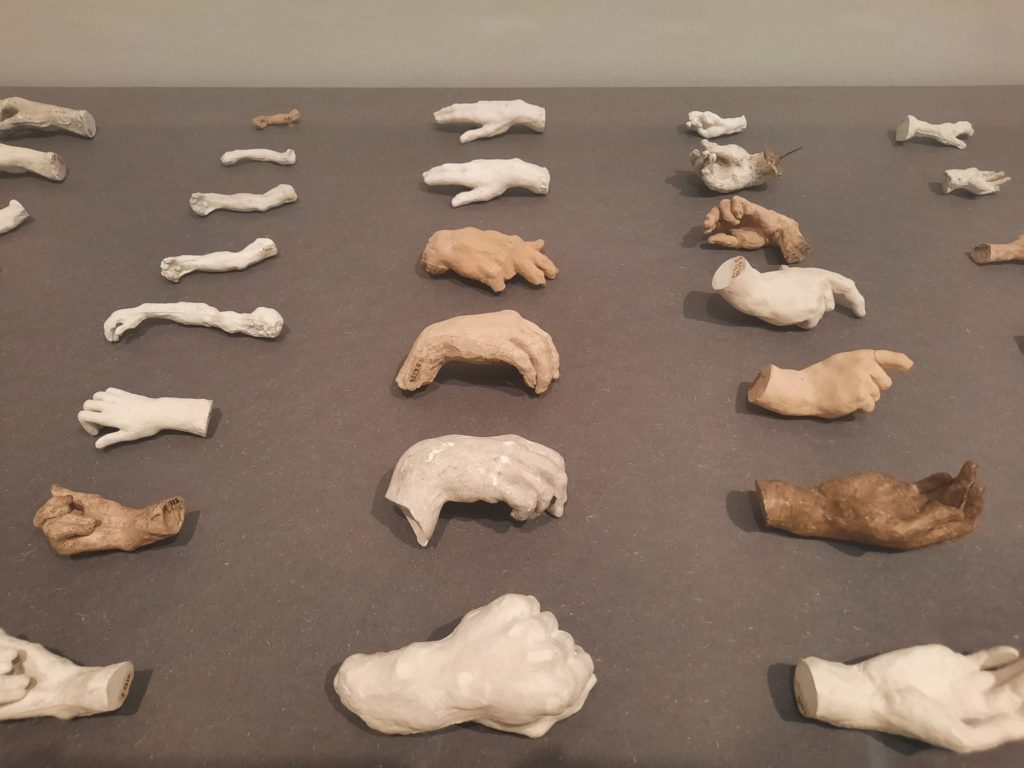
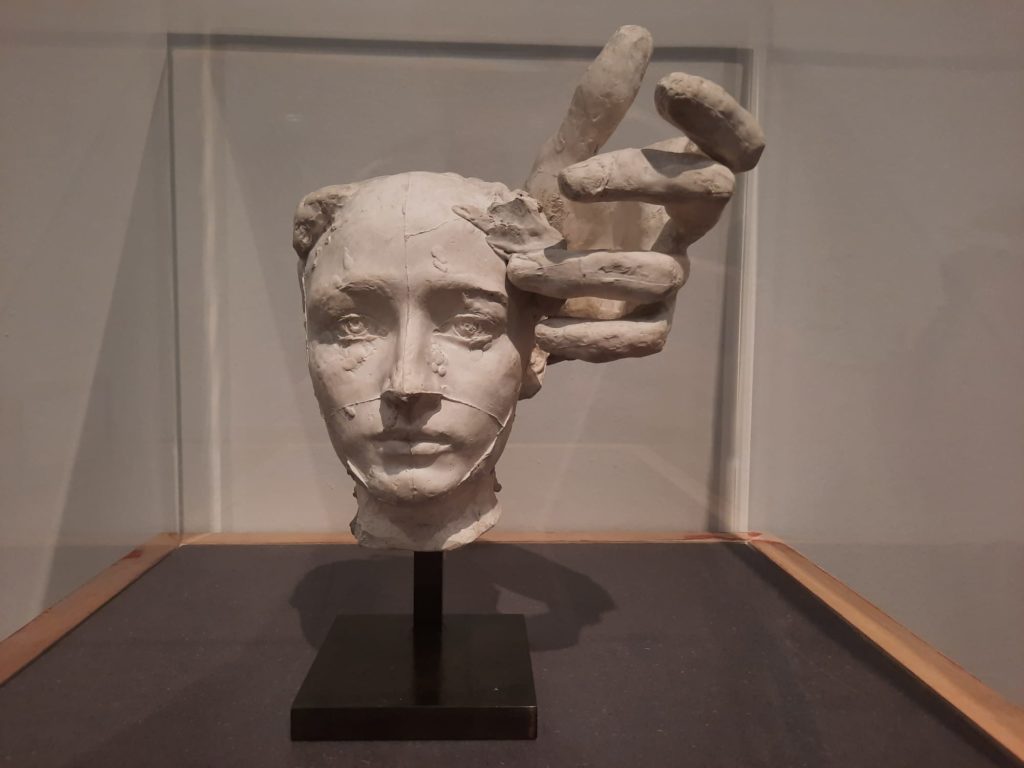
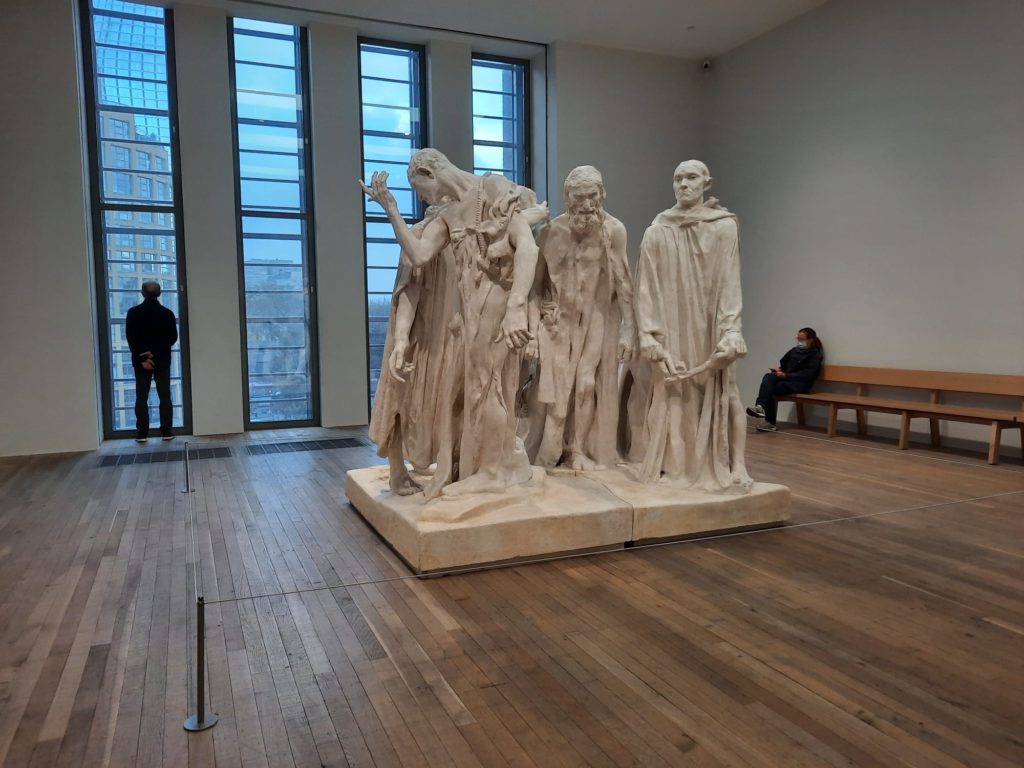
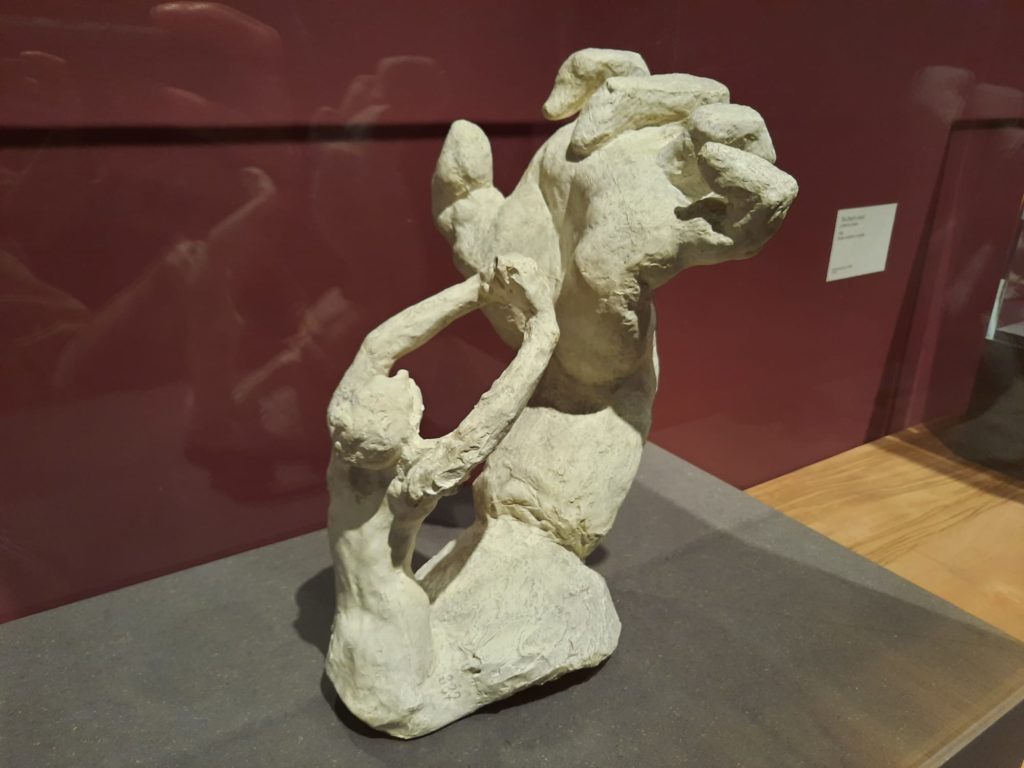
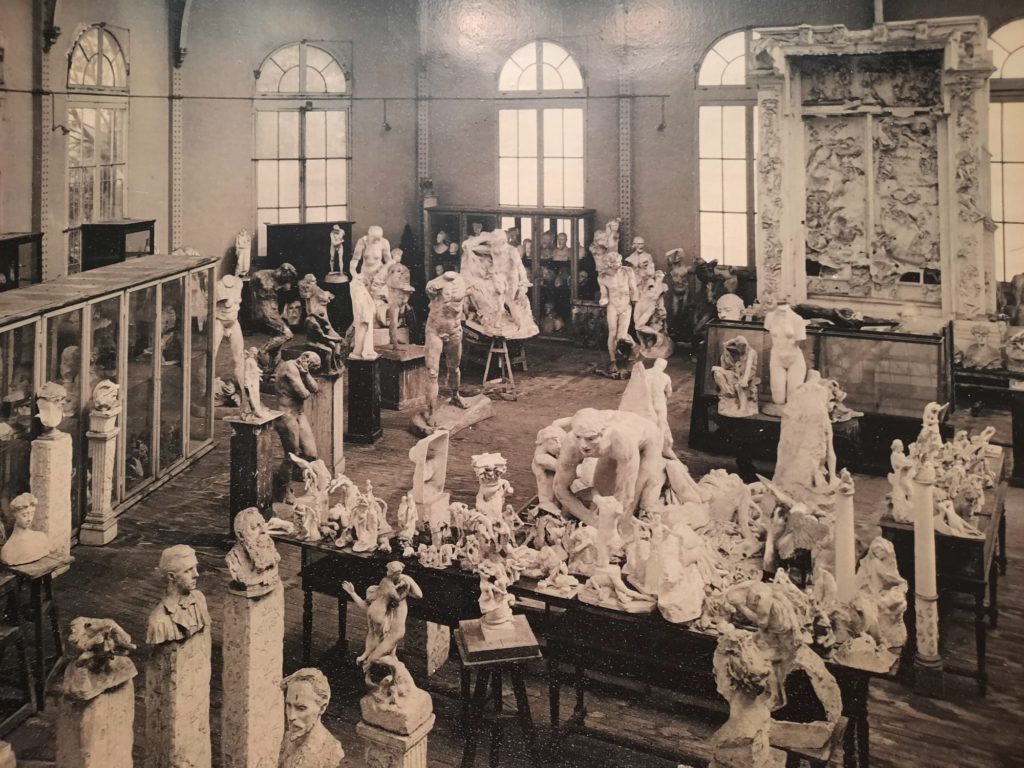
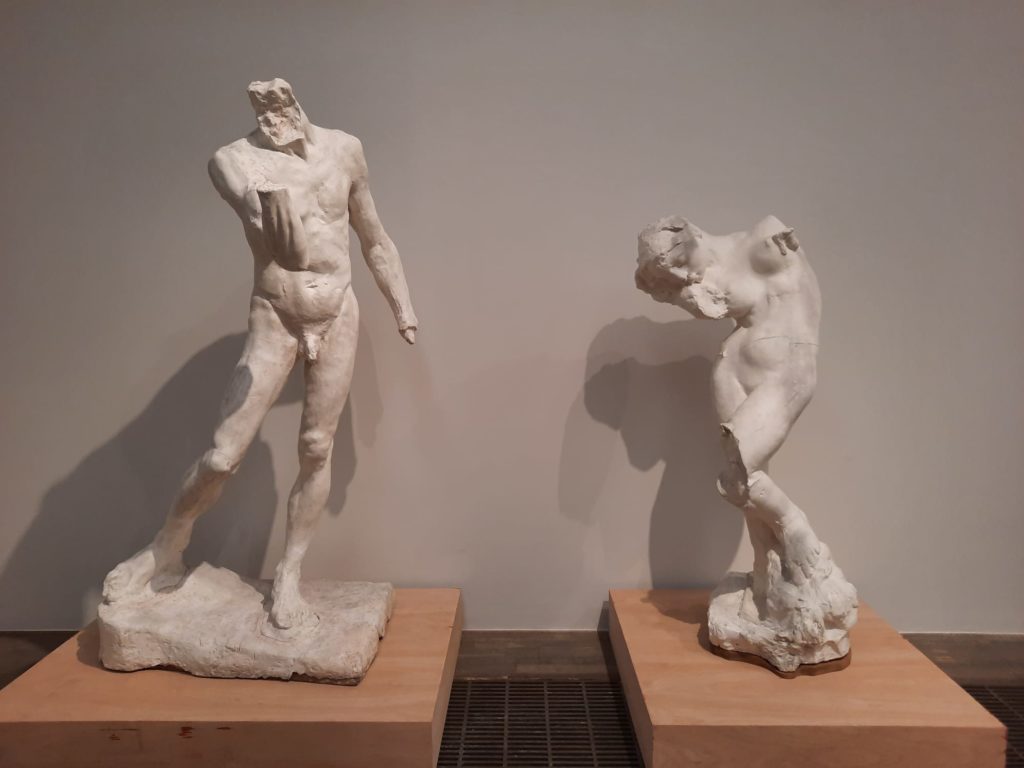
A Creative Force
Something to know about Rodin which helps to contextualise his work and this exhibition is the story of The Gates of Hell. Inspired by Dante’s Divine Comedy, Rodin worked for a number of years on a set of monumental doors/gates. These were to be adorned with figures representing the characters from Dante’s work. Rodin started work on them in the 1880s, gave up for a while, and only agreed to casting them in bronze in 1917. He didn’t live to see them finished. However, The Gates of Hell acted like a sort of library of ideas for Rodin in his career. Several of his most famous works like The Thinker, The Kiss and Fleeting Love, came originally from this project.
Rodin loved to borrow and reuse elements of his own works. A hand from one figure could be disembodied to take on a life of its own, or form an assemblage with another fragment. This exhibition is very good at demonstrating the creative possibilities of such an approach. There is a sort of restless vision to constantly rethinking earlier works. And an energy to what results. As well as coming back to his own back catalogue for inspiration, we also see how Rodin endlessly returned to some subjects. Japanese performer Ohta Hisa (Hanako), for example, is the subject of more than 50 busts in the Musée Rodin’s collection. As I walked around the exhibition I could almost feel Rodin’s brain churning, unable to settle on a final form for anything.
The exhibition, like Paula Rego, is nicely put together. The simple presentation evokes the studio and Rodin’s 1900 retrospective. There are QR codes where you can listen to contemporary artists reflect on Rodin’s practice. And there is a depth to the works on display that gives a real insight into how Rodin worked and why that was so important.
Salterton Arts Review’s rating: 4/5
The Making of Rodin on until 21 November 2021
If you see this after your page is loaded completely, leafletJS files are missing.

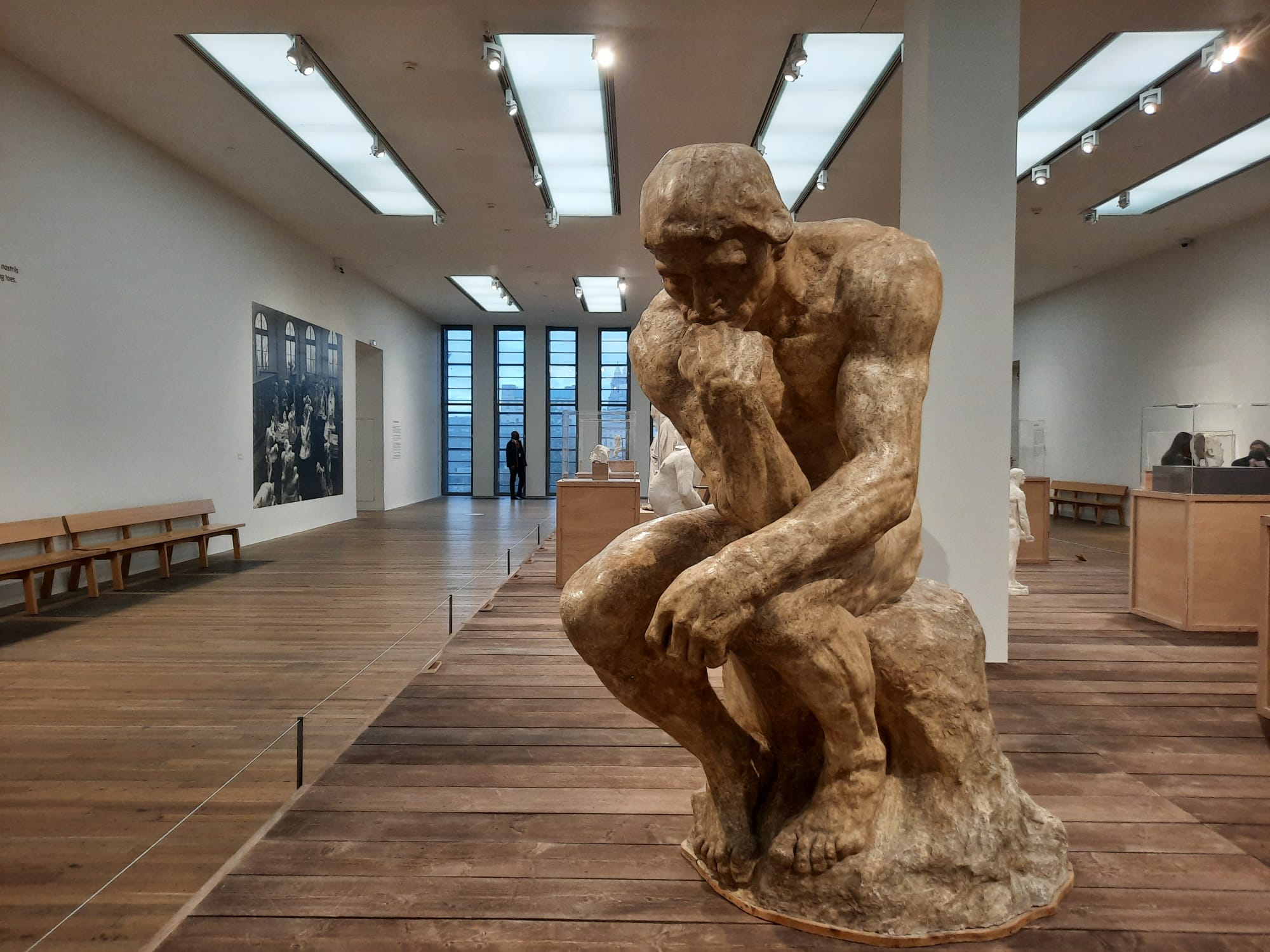
2 thoughts on “Tate vs. Tate – Paula Rego // The Making of Rodin”